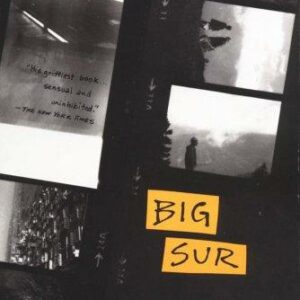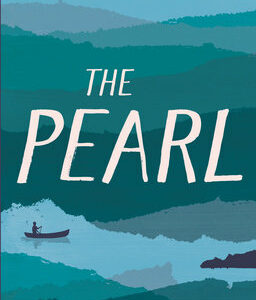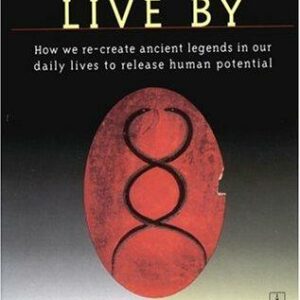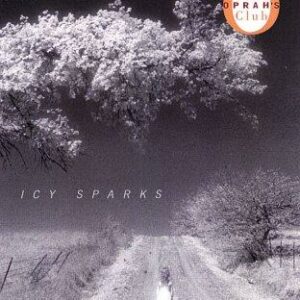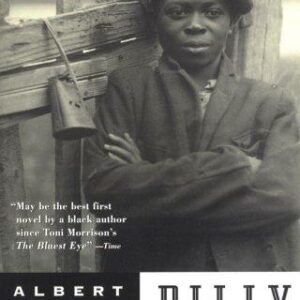Healing Children
$17.00
| Title | Range | Discount |
|---|---|---|
| Trade Discount | 5 + | 25% |
- Description
- Additional information
Description
A National Bestseller
An “astounding and miraculous ” (Madeline Levine) medical memoir by one of our nation’s leading pediatric surgeons– the visionary head of Children’s National
Anyone who has seen a child recover from a wound or a broken bone knows that kids are made to heal. Their bodies are more resilient, more adaptive, and far more able to withstand acute stress than adults’. In this inspiring memoir, Dr. Kurt Newman draws from his long experience as a pediatric surgeon working at one of our nation’s top children’s hospitals to make the case that children are more than miniature adults. Through the story of his own career and of the brave kids he has treated over the years—and their equally brave and tenacious parents—he reveals the revolution that is taking place in pediatric medicine.
When he decided to become a pediatric surgeon, the field was in its infancy, struggling for esteem. Now, nearly forty years later, it is at the forefront of exhilarating new discoveries in everything from cancer research to mental health care. But few parents know how to access the best care for their children. Far too many find themselves frustrated and afraid.
Dr. Newman wrote this book to help guide parents—not just of sick kids but of all kids —and to share his knowledge of what children need to thrive. A deeply human story with a spectacular cast of young heroes and heroines, Healing Children will convince you that we still have a lot to learn from our kids.“Newman captures the beautiful collegiality of pediatric medicine and the wisdom of parents and of children themselves, as in this description of a young patient with intestinal failure: ‘He thought more about his parents’ suffering than his own. As a human being, he put me to shame…’ The kids he describes are themselves heroic… Newman, a pediatric surgeon, argues that seriously ill and injured children are better served at pediatric hospitals than at adult hospitals — a claim generally supported by the data showing that kids with bone fractures, brain injury and severe sepsis do best when pediatric specialists manage their care.” – The New York Times
“Kids’ resilience, both physical and emotional, is at the heart of this illuminating and wise book by one of America’s foremost pediatric surgeons.”
—People, “12 Best New Books”
“If you did nothing but read the astounding, miraculous and occasionally crushing stories that Dr. Newman so vividly relates about daily life in a pediatric hospital you would be enthralled by Healing Children. But there is a bigger truth to this book, a more compelling reason to read it. And that is to acknowledge not only the courage of young patients and pediatric physicians alike, but to be brought face to face with the many ways that we don’t prioritize children’s health. That with the vast resources of this country, pediatric hospitals are few and far between, pediatricians are generally underpaid and, most of all, research dollars are hard to come by. Healing Children is an amazing look at the tenacity and courage of kids and doctors under difficult circumstances. But it is also a cri de coeur for prioritizing the health and well-being of our youngest and often our most vulnerable citizens- our children.”
— Madeline Levine, Ph.D. author of The Price of Privilege and Teach Your Children Well
“Kurt Newman is passionate about caring for children as children, not just scaled-down versions of adults: advocating for letting parents into recovery rooms, and realizing that to a preteen the prospect of a noticeable scar may be as scary as surgery itself. He’s concerned that seriously ill children are too often treated by specialists with little pediatric experience. And he worries that America’s children are competing for a limited pool of health-care funds with an ever-growing population of seniors and disabled adults…Healing Children makes an emotional case for the importance of ‘child-specific’ medical treatment. The book is composed of individual, highly detailed stories of mentors, treatments, case studies and especially the young patients themselves, for whose courage and resilience he has boundless admiration.”
– Washington Post
“In this deeply moving and personal book, Kurt Newman shares the inspiring stories of the children he has treated and reveals what he has learned from them. In the tradition of Jerome Groopman and Atul Gawande, he helps us to learn about medical issues while feeling the emotions of real-life situations. Healing Children includes a lot of practical advice for parents, but it is a book for everyone who cares to understand the beauties and mysteries of health.”
–Walter Isaacson, bestselling author of Einstein and Steve Jobs
“Healing Children brings Dr. Newman’s interactions with children and families to life while poignantly sharing how they impacted his career, his leadership and his humanism. As a pediatric emergency physician, I identify with his insights into the lives of children and families. Kurt celebrates children and what they teach us every day in the practice of the noble field of medicine.”
– Karen Remley, MD, MBA, MPH , FAAP, Professor of Pediatrics, Eastern Virginia Medical School
“As a parent who has seen Dr. Newman at work, both as a surgeon on our young son and as CEO of one of the top children’s hospitals in the country, I know this book comes from the heart. It is a great testament to the importance of the doctor-patient relationship and really tells us what families really need to know. With this moving memoir full of personal stories, Dr. Newman illuminates the importance of caring for the youngest among us. We can all learn from that journey.”
— Brett Baier, Chief Political Anchor, Fox News Channel and bestselling author of Special Heart: a Journey of Faith, Hope Courage and Love
“Newman, president and CEO of the highly rated Children’s National Medical Center in Washington, D.C., knows how to hook a reader . . . He makes a compelling case for giving more resources to the ‘painfully undervalued and underfunded’ field of children’s medicine in a society that prioritizes adults and end-of-life care . . . As the nation tries to figure out how best to spend limited health-care dollars, it’s helpful to consider Newman’s strong argument for giving kids a fair share.”
–ALA Booklist
“With nearly 40 years of experience, Newman, a veteran surgeon, liberally shares a variety of personal stories and case histories from children in his clinical practice. He laments that pediatric medicine is ‘painfully undervalued and underfunded’ while adult diseases garner the majority of the attention, financial support, and clinical investments within the American medical community. To illustrate the need to re-evaluate how children’s medicine is perceived and to reprioritize its importance, the author introduces readers to some of the brave, resilient children he has treated throughout his coming-of-age surgical residencies and his long-standing tenure in pediatric medicine. He also spotlights many pioneering medical professionals who continue to be committed to the betterment of treating and healing ill children… Newman cites heart-rending instances of genetic abnormalities, cancer, severely underweight babies, and overprotective parents, all briskly described yet carrying the emotional weight that accompanies an innocent child enduring a painful health crisis. Written primarily as a guide for parents navigating the unpredictable health of their children, the book also addresses the future of pediatric care, as Newman delves into the most innovative therapies and initiatives in development. As the current CEO of Children’s National in Washington, D.C., the author sets forth a convincing argument to place children’s medical requirements and their need to thrive well into adulthood at the forefront of American medicine, and he admits that ‘these kids have been my real teachers.’ …Newman’s compassionate approach hits the heart and soul of these unique experiences. A genuine and inspiring chronicle of a doctor fighting the good fight.”
–Kirkus Reviews Kurt Newman, MD, is president and CEO of Children’s National Medical Center in Washington, D.C., widely recognized as one of the nation’s best pediatric hospitals. Dr. Newman has been a surgeon at Children’s National for over thirty years and is a professor of surgery and pediatrics at George Washington University School of Medicine & Health Sciences. He helped create the Sheikh Zayed Institute for Pediatric Surgical Innovation, dedicated to making children’s surgery pain free and less invasive. A strong advocate for the expansion of mental health treatment access for kids, he is actively involved in improving pediatric health nationally through his work on the boards of the Children’s Hospital Association and Safe Kids Worldwide. He and his wife Alison are the parents of two college age sons and live in Bethesda, Maryland.The Walk Across the Bridge
Entering Ella’s room that morning, I had expected to find her resting peacefully with a nasogastric tube sucking bile from her stomach. What I had not expected was to find her parents and grandfather seated in a semicircle around her with their own tubes sticking out of their noses and taped to their foreheads.
I was a third-year surgical resident at Brigham and Women’s Hospital, making rounds with the senior resident-technically my boss that day-on my first rotation in pediatric surgery at Boston Children’s Hospital. Both the Brigham and Boston Children’s were teaching hospitals affiliated with Harvard Medical School-many of their doctors taught at Harvard, and Harvard Med School students went there for training and to do their residency. Crossing the bridge between the two hospitals, I had felt the senior resident’s mood shift from gruff to decidedly grumpy. Now, as we stood in Ella’s room trying to make sense of the scene, I felt he was about to erupt.
He was not the first colleague to show frustration in a pediatric environment. After two years of residency at Brigham and Women’s, I had grown accustomed to the regular complaints of my peers as they crossed the bridge to Boston Children’s, one of the first and best pediatric specialty centers in the nation. I suppose at some level it was to be expected: they were mimicking an attitude common among the famous doctors who were training us. Most of my fellow residents were aspiring brain surgeons, cancer researchers, orthopedists, and heart surgeons. They had little time or energy for anxious parents, let alone for the quirks and tantrums of children.
The previous day the senior resident had brusquely informed Ella’s parents she would need a nasogastric tube, which we would have to insert through her nose down into her stomach. Her intestine, which we had untwisted in a relatively common but quite invasive surgical procedure, was still not functioning properly, and we needed to relieve it of all stress to give it a chance to heal. Ella’s parents had been patiently waiting for weeks to see some progress, and the news of the tube had visibly crushed them. The prolonged hospital stay was taking a toll on their four-year-old daughter, and they worried the tube would further damage her spirits.
The senior resident didn’t seem to register their concerns. He silently examined Ella one last time, then wrote out the order for the tube to be inserted.
I wanted to reassure them somehow but couldn’t think of what to say or do that wouldn’t seem insubordinate.
Ella’s parents moved in closer and spoke more emphatically. “She is not ready for this,” her father said, his voice not so much stern as weary, almost pleading. “She’s been through too much. We have to be able to explain-in her own language-why she needs this.”
My colleague looked up and mumbled, “I’m sorry,” and then we were off, leaving them with a look of disbelief.
So the following morning when we entered the room, I was struck by the majesty and outrageousness of their gesture.
“We told you we would do whatever it took to make this easier for her,” Ella’s father said matter-of-factly. Her mother stood up and moved closer. I will never forget the willfulness-the sheer, animallike protectiveness-that she exuded.
The senior resident blushed and didn’t even examine the girl before saying, “This is against hospital policy.”
I had to do all I could to keep from wincing.
Ella’s mother saw that her daughter was registering the tension in our voices and motioned for us to step into the hallway, but the chief resident would not budge. “You are going to have to remove the tubes immediately or we will ask you to leave the hospital,” he said.
The grandfather folded his newspaper and frowned. He looked at his granddaughter, then shook his head and closed his eyes.
“Immediately,” he repeated, and out he went, before they could respond.
I trailed after him despondently, angry at myself for doing nothing to intervene. I knew he would follow through on his threat, and I could tell the parents understood this. But if it helped the girl, was it really such a problem?
Over the course of my first pediatric surgical rotation, the trips across the bridge had had the opposite effect on me as on most of my colleagues. I loved working at Children’s. It felt a bit like going home. I was raised in North Carolina, earned my undergrad degree at the University of North Carolina, and went to Duke medical school, and I was still recovering from a culture shock that had less to do with the infamous rigors of residency at Brigham and Women’s than with the gruffness and wear-it-on-your-scrubs ambition of life among hard-chargers up north.
The care and results at the Brigham were excellent, of course, but the coolness and professionalism there, the dispassionate approach to patient interaction, left me wanting. In three short months I had grown to cherish the heightened authenticity I felt every day at Boston Children’s. In my first year as a resident, I had made the trip across the bridge a few times during rotations in plastic surgery and neurosurgery, specialties in which there were no separate pediatric departments, but it wasn’t until now, in my third year, that I was doing a full rotation in pediatric surgery.
In the end, Ella’s parents removed the tubes from their foreheads, and their daughter’s intestines began functioning properly soon thereafter. Her digestive system had been given the respite it needed to recover completely. My boss, having done the right thing in the wrong way, departed a year later for a very successful career in adult surgery, and I was left with nagging questions about the system and my future. Why couldn’t hospital policies be adjusted to consider the emotional needs of children and their families? Young parents are so desperate to see their children heal. Shouldn’t we adjust our ways to address their needs, too? I began to see the bridge connecting the Brigham and Boston Children’s as a passage to a different form of medicine, one that accounted not just for the unique psychology and biology of children but also for the concerns of their families.
A few months later I was back on adult rounds in a general male ward at the Brigham that was typically made up of uninsured patients. One night one of my patients, a man we had nicknamed Mr. Pibb, was feeling uncomfortable. HeÕd had stomach surgery a week before, and the surgeons had placed a nasogastric tube in him, just as they had done with Ella. They wanted his stomach to rest and heal; draining it was key.
The senior resident had directed me to make sure the tube stayed in place all night. Mr. Pibb was notoriously feisty and craved soda pop-hence his nickname, which rhymed with his real name. The painkillers were making him restless, and he was a prime candidate to thrash about and rip his tube out.
The first time the nurse paged me, about midnight, I knew immediately what had happened-the tube had come out. I rushed upstairs and tried to calm Mr. Pibb. Then I gave him all the little extras that I understood to be the hallmarks of a good nasogastric tube insertion. I numbed his nose a little bit to make the placement more comfortable, put the tube on ice to stiffen it a bit so it would be easier to place, and calmly asked him to cooperate with his swallowing as I ran the tube down his throat. Then I taped it in place about as gently as I had ever seen the kindest nurse tape a patient.
An hour and a half later, while I was on my cot catching my first shut-eye of the night, the nurse paged me again. I was by this point, as my mother used to say when I did something wrong, “clearly perturbed.” I called upstairs, and the nurse told me that Mr. Pibb had kept thrashing and had pulled the tube out again.
This time I didn’t numb his nose or call for ice. I taped the hell out of the tube. I even ordered that he be placed in restraints. Exhaustion and frustration had gotten the better of me, but at least I was certain that he would not be able to dislodge the tube again.
But he did. I had just lain down again when the call came in. A medical student named Robert Sackstein was resting on the cot across the room from me.
“Okay, your turn, Robert,” I recall saying. “Nothing like learning on the job.” I craved sleep, and having Robert give it a try would buy me a few winks. “But you’ve got to get them to restrain him completely this time.”
The procedure normally takes half an hour with hard cases like Mr. Pibb, so I closed my eyes as Robert got up, and I drifted off before he even closed the door.
But Robert was back ten minutes later. I sat up and asked him what happened.
“What do you mean?” he asked with surprise.
“What happened up there-why are you back so quickly?”
“I put the tube back in and ordered that he be fully restrained,” he said.
“That quickly?”
“Well, yes,” he said.
“He didn’t fight it? He didn’t give you a hard time?”
“Well, no,” Robert said, obviously trying to get me to shut up so he could get some sleep himself. He turned over, and I suspected he was smiling in the darkness.
“Mr. Pibb did say something to me when I got there,” he offered.
“What was that?”
“He said, ‘Son, I don’t care what you’re going to do-just don’t call that bald bastard back in here!'”
And with that, Robert broke out laughing. I was, at thirty, already going bald, professional anxiety no doubt expediting genetic destiny. I chuckled and winced not so much at being made fun of as at being found out.
The glaring difference in my experiences of the same procedure on either side of the bridge-and repeated scenarios like it-were starting to make me think that I should go into pediatric medicine. But this was not a field that the best and brightest in Boston’s surgical training grounds were encouraged to pursue. Curing cancer and finding solutions for heart disease were the worthy callings for Harvard’s most ambitious surgery residents. Pediatric surgery was barely on the radar screen of ambition. I was beginning to feel like a literature student stuck in an engineering class.
Chapter 2:
Learning Empathy
During my first year of residency, a famous doctor by the name of Joe Murray was the head of both adult and pediatric plastic surgery. Plastic surgery was one of the few fields that didn’t have distinct department heads at Boston Children’s and the Brigham. I quickly realized that being assigned to learn from Dr. Murray for two months meant pushing not only my brain beyond its normal capacity but my body, too. I’d hike up and down the “Pike” all day, marveling at Dr. Murray’s talents and his stamina. The layout of the place did not make it easy for him to manage his cases.
The Pike was the nickname for the interminable passage that connected all the wards at Brigham and Women’s. It began at the emergency room and ended with the bridge to Boston Children’s Hospital. On trauma rotations, when you were on call at night, you could be at one end of the Pike stitching a guy who’d been hit in the face with a bottle and then have to race the length of the Pike and across the bridge to treat a child suffering from a dog bite. To fast-walk the length of the Pike was decent preparation for the Boston Marathon, particularly when you had to do it dozens of times a day, as I did when I was following Dr. Murray. He’d resected a small birthmark at Boston Children’s, then rush off to do a facial fracture repair at Brigham and Women’s. Back then the Pike was worthy of its namesake (the Mass Pike): gritty, cold, and long.
One of the first patients I saw Dr. Murray operate on was a boy who had been badly burned all over his body. Dr. Murray had already performed a series of skin grafts, and the child was progressing marvelously. Like many of his peers, Dr. Murray had gotten hooked on plastic surgery as a military surgeon during World War II. With so many wounded and burned soldiers in need of skin grafts, he had sought to understand the immunology of transplantation. Why was some skin rejected, and what could be done to prevent it? He also became an expert at transplant surgery and was the leader of the surgical team at the Brigham that successfully transplanted the first human kidney in 1954. Decades later, deep into his next passion, plastic surgery, he won the Nobel Prize in Physiology or Medicine his transplant work.
Dr. Murray was reconfiguring this boy’s skin and reducing much of his scarring. He was slowly transforming the person he would become, and the boy seemed to know it. Watching them interact lifted my spirits every morning.
After checking in on the boy, we would hustle across the bridge and cruise down the Pike toward the adult plastic surgery ward. Among the first patients I assisted Dr. Murray with at the gloomier end of the Pike was one of the grouchiest, most disheartening patients I have ever encountered. He certainly had reason to be disgruntled. He was in his late fifties and was suffering from a pervasive head, mouth, and neck cancer. The cancer had so eaten into his face and head that Dr. Murray had been forced to do an incredibly complicated restructuring of the man’s jaw and cheeks. This was not cosmetic surgery; it was essential for him to maintain some sort of functioning head and neck. In a series of operations, Dr. Murray had replaced the tissue that had been removed with flaps of soft tissue taken from the man’s neck, carefully rotating them into place. The work was art and engineering all in one.
Throughout the nearly ten hours of surgery, I stood transfixed as Dr. Murray connected muscle and tissue and flaps. My job was to monitor the patient’s blood supply and vitals-such a long surgery could quickly head south-but at times I caught myself losing track as I marveled at his dexterity. But despite my admiration, I questioned his involvement in the case. I was angry at the patient, and this was becoming a troublesome pattern. He had smoked multiple packs of cigarettes a day and had, I believed, inflicted this awful situation on himself. And still he thought he had a right to curse us and accuse us and generally act disrespectfully to the nurses, who were trying to make his life as tolerable as possible.US
Additional information
| Dimensions | 0.6900 × 5.4800 × 8.3400 in |
|---|---|
| Imprint | |
| ISBN-13 | |
| ISBN-10 | |
| Author | |
| Audience | |
| BISAC | |
| Subjects | biographies and memoirs, advocate, board, biographies, autism, memoirs, autobiographies, anxious, Child Development, positive parenting, autobiography books, health and wellness, safe, health and fitness, medical books, parenting book, anorexia, conscious parenting, mindful parenting, residency, ER, MED069000, immunotherapy, greys, innovation, kids, child, psychology, wellness, chronic, pain, health, biography, Memoir, mental, medical, parenting, school, medicine, parenting books, cancer, stories, HEA046000, doctor, autobiography, game, anatomy |




